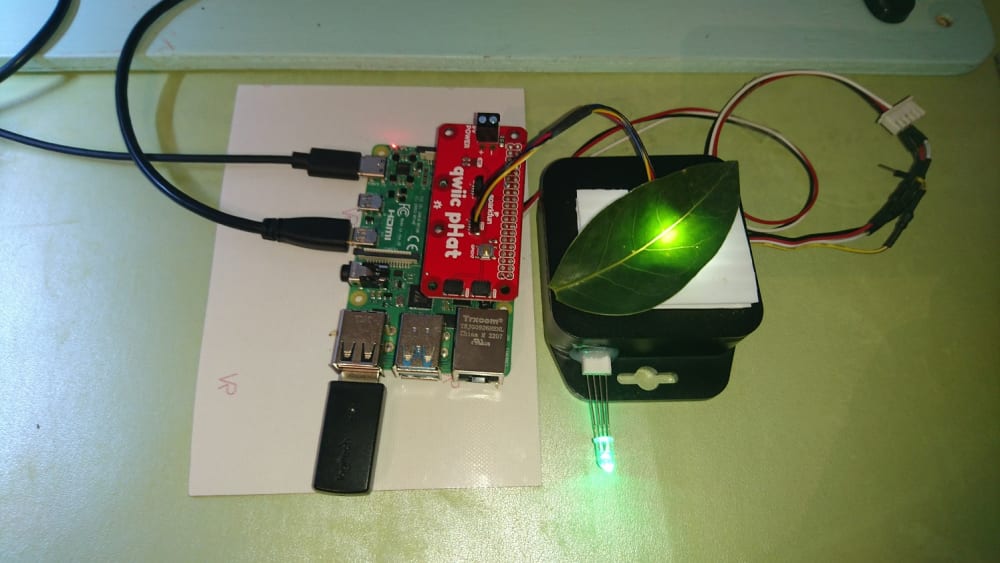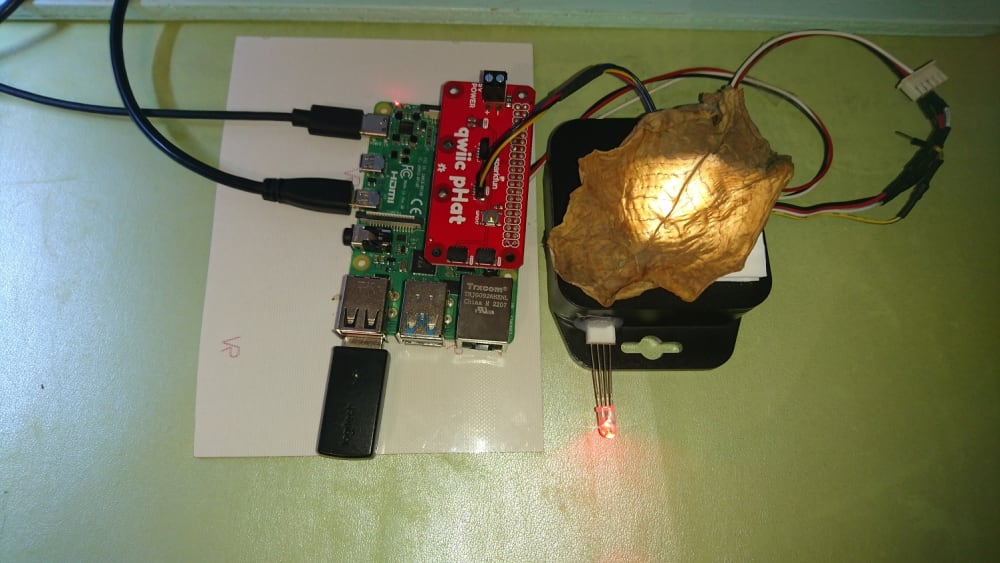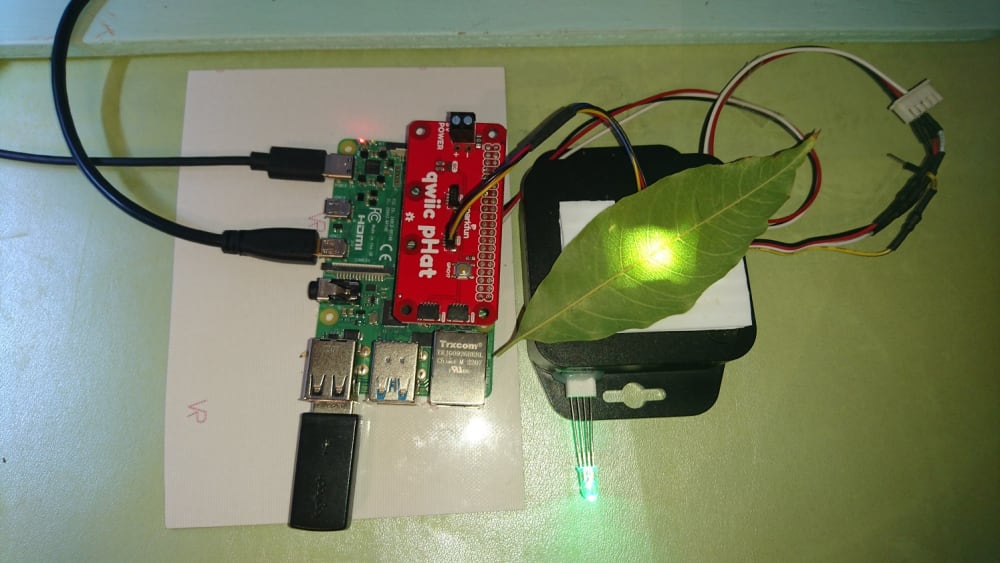
This project uses the AS7263 NIR (near infrared) spectrometer sensor and the Raspberry Pi 4B board to assess plant foliage health. It explains how to uses the sensor’s channel readings and the standard Normalized Difference Vegetation Index (NDVI) equation to calculate an estimated NDVI value. Also prints the value and a “HEALTHY” or “UNHEALTHY” statement, and turns ON an RGB LED to green or red to indicate whether the foliage is healthy or not, respectively. Finally, it saves the test data into a CSV format file. The latest version includes a real-time IoT monitoring to share the captured information to the whole world in the internet cloud.
Chlorophyll is any of several related green pigments found in cyanobacteria and in the chloroplasts of algae and plants. Chlorophyll allow plants to absorb energy from light. Chlorophylls absorb light most strongly in the blue portion of the electromagnetic spectrum as well as the red portion.Conversely, it is a poor absorber of green and near-green portions of the spectrum. Hence chlorophyll-containing tissues appear green.
Normalized Difference Vegetation Index (NDVI) quantifies vegetation by measuring the difference between near-infrared (which vegetation strongly reflects) and red light (which vegetation absorbs). So, the scientists use NDVI to assess foliage health by measuring the difference between the amount of near-infrared and red light that is reflected off the foliage, using the following equation: NDV! = (NIR-Red)/(NIR+Red)
This project is one way we can monitor plant health and help keep our planet running a little cleaner and healthier. I can see green foliage, but I didn't know if I had enough chlorophyll until I used this device.
HOW DOES IT WORK?
- First, I built a module to accommodate the AS7263 sensor. The goal is to prevent strange light interference.
- Then, the pHat module will be configured to interface the AS7263 sensor with the Raspberry Pi board.
- The AS7263 NIR Sensor libraries wias installed.
- The experiment has a scientific nature. I developed a "Plant Foliage Health Monitor". Here I used the AS7263 NIR (near infrared) sensor, and I adapted a module to do the tests. The objective is to analyze samples of plant leaves and verify their health status as "HEALTHY" or "UNHEALTHY".
- The last version consists of adapting an IoT monitoring system in real time. The goal is to do experiments and send data to the internet cloud so that colleagues around the world can see the data from our experiments in real time.
PUBLICATIONS:
- Below the link of the publication in Hackaday:
https://hackaday.io/project/191333-plant-foliage-health-monitor - The same project in element14:
https://community.element14.com/challenges-projects/design-challenges/sci-pi-design-challenge/b/blog/posts/light-spectrophotometer-with-raspberry-pi-7---monitoring-plant-foliage-health
-
Awards
-
 2023 Top 100 Entries
2023 Top 100 Entries
Like this entry?
-
About the Entrant
- Name:Guillermo Perez
- Type of entry:individual
- Software used for this entry:Python
- Patent status:pending








